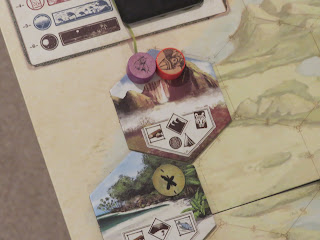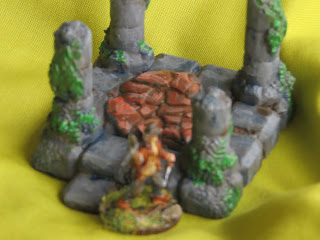Another quarter ends, and I've not forgotten how to read, but haven't maintained much of a pace, which is odd because there's not much else to do when you're laid up for a week in hospital.
Ben Macintyre - Colditz: prisoners of the castle
Having grown up with the TV series, the boardgame and the film, I thought I must have heard all about Colditz before my brother-in-law passed on this book for me to read. Certainly a lot of the escape attempts are familiar: the impersonation of Franz Josef and of Willi the electrician, for example. But it seems that the main source material was Major Pat Reid's book, and he escaped relatively early on, so left out much that happened after that.
There's a lot of interesting material in here that I hadn't come across before. There's the story of Majumdar and the Indian nationalist angle. The book addresses sexual frustration and how the inmates dealt with it. Some of the issues of where to hide escape equipment such as maps and money (before the days of cavity searches). I thought of Colditz as a camp for the "bad boys" and repeat escapers, but it was also used for possible high-value prisoners, including a nephew of Winston Churchill, who might be useful in any bargaining with the victorious allies. The sad story of the last escape attempt was new to me and very moving, given this was the same officer who played the part of the sgt major "Franz Josef" so well with so much planning, driven to such a desperate and hopeless rush. The strange events of the end of the war were also new to me, when the kommandant gave orders for the prisoners to be armed if necessary to defend themselves from the SS.
Recommended, even for those who think they may have heard it all before.
Stephen Fry - Mythos
As a boy, I read Roger Lancelyn-Green's and Charles Kingsley's books of the Greek Myths and loved them. It was probably one reason I have an academic qualification in ancient Greek.
Stephen Fry's rendition of the old myths & legends is more comprehensive, organised in a sort of chronological order, where the other two just picked out their favourite stories and left it at that. This means that he begins with primordial Chaos, followed by the titans (who are mostly the embodiment of natural phenomena like earth, sea, day, night, sleep and individual rivers) and Zeus is not even born until page 30. Once the human race has been created, the best-known tales begin, and Fry tells them with an obvious affection, mixed with the scholarship of alternative versions which is kept apart in footnotes.
I particularly enjoyed his version of Sisyphus, which goes well beyond the boulder that everyone remembers.
John Lambshead - One-Hour Ancient & Medieval Skirmish Wargames
I found this an annoyingly lazy book. The basic rules were already written (in his Ohe Hour Skirmish Wargames), so most of the book was there for free, but still fails to address FAQ from the original volume. For example, it still says that a model may not move any further after shooting (point 3 in "The Player Phase" p8), but doesn't clarify that close combat is also expected to be the end of a model's activation.
Once again the scenario descriptions mention some terrain that should be on the table, but most is not marked on the map, and the effects of terrain on the game are not clearly defined (e.g. the punishment raid on p70 has gullies and fast-flowing streams, but are they more than waist-deep as specified on p9? and how many should there be? and where are they?). There are rules about light infantry, heavy infantry etc with no explanation that these are defined by the level of armour the models wear.
Combat resolution is slower (both shooting and close combat) to allow a second round of contested card draws (one draw to hit, a second draw to penetrate the armour). Attacks are more likely to be ineffective than in the original book, because in all cases the defender draws extra cards for one or other of the two draws. The defender is allowed a counter-attack, which is resolved immediately (two more contested draws). While the author argues that this is to provide differentiation between different grades of armour, in practice that could have been handled by card modifiers or by additional card draws on defence; the changes to the rules make combat more granular and longer-running, creating a more heroic / pulp feel to the fighting, so that it goes on longer and in more detail.
To play this game, the players will have to fill in the gaps, some of which will have significant impact on the game balance.
Anthony Horowitz - Close to Death
I saw this in a bookshop just before my family asked what I would like for Christmas, so I jumped at the chance. If I'd done my homework I would have realised that this is the 5th Daniel Hawthorn book. While I've only read the first two and this one refers to events in the ones I missed, so it would make more sense to read them in order.
I recommend starting with The Word is Murder. Horowitz does something interesting with the format of the whodunnit by including himself as a character (rather like Dr Watson) and this volume continues to explore his relationship with the detective.
Enjoyable, if not a masterpiece like Magpie Murders or Moonflower Murders. The way those two books interweave a whodunnnit book with a mystery involving the author is something exceptional in my opinion, although I didn't take to the anagram at the heart of Magpie Murders and therefore prefered Moonflower Murders. dr gustibus nil disputandum as they used to say.
Until next time, health & happiness to you all.







